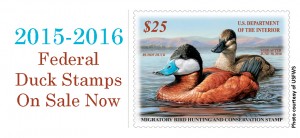Frogging season underway
A summertime tradition in Kansas is underway as lakes and ponds around the state are teeming with an outdoor delicacy unlike any other. The 2015 Kansas bullfrog hunting season, also referred to as “frogging,” began July 1 and runs through Oct. 31. During this time, anglers can attempt to catch these four-legged amphibians with several different techniques.
Bullfrogs may be taken by hook and line, dip net, gig, bow and arrow, or crossbow, and a line must attach bow to arrow, and the arrow must have a barbed head. If you’re really up for a challenge, bullfrogs can also be taken by hand. The best method is to walk quietly through the water at night and shine a bright light along the bank until a pair of glowing eyes appear. Temporarily blinded by the light, frogs can be approached and grabbed or netted.
The daily creel limit is eight, with a possession limit of 24. Unless exempt by law, froggers must have a valid fishing license to take, catch, or kill bullfrogs.
Considered a delicacy, frog legs have a taste and texture that resembles a cross between shrimp and fish. A popular way to cook them is to dip the legs in egg and then into a mixture of flour and corn meal, seasoning salt, and pepper. The legs are then fried to a golden brown and served up hot.
For more information on bullfrog season, visit www.ksoutdoors.com and click “Fishing / Fishing Regulations / Bullfrogs” or consult the 2015 Kansas Fishing Regulations Summary.
Have at it and have a hoppin’ good time!


